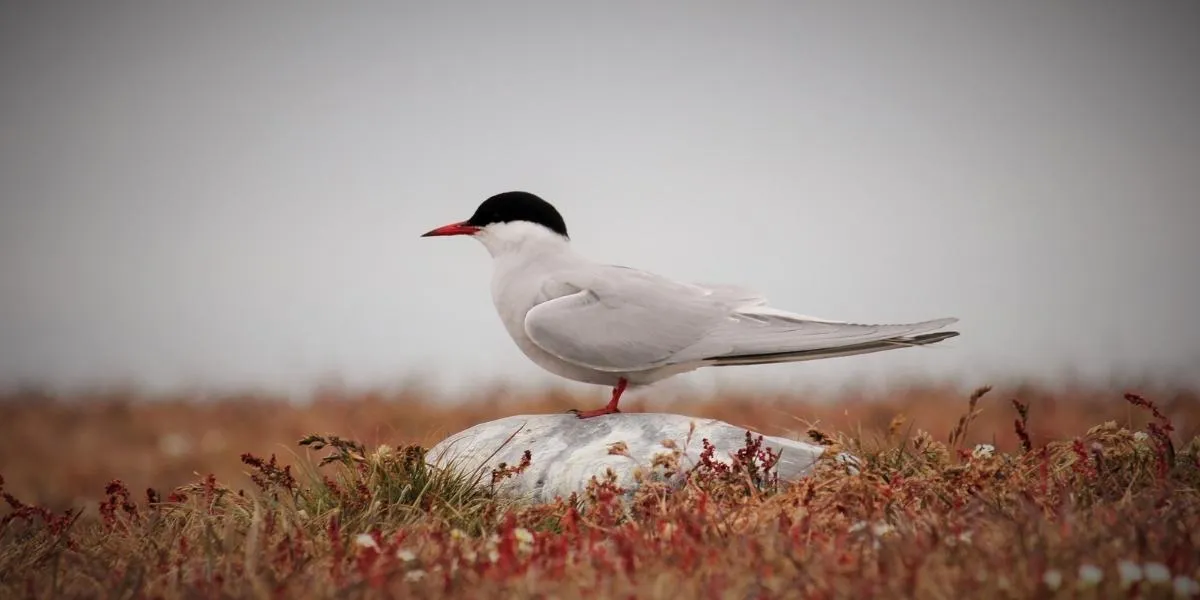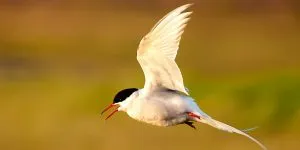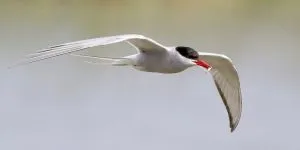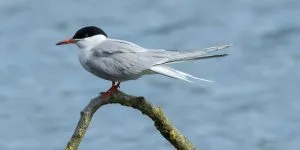We are currently living through the sixth mass extinction: The “Anthropocene”. Global warming, habitat fragmentation, and invasive practices threaten biodiversity across the globe. What effect does this have on the arctic terns? Do their vast geographical range and migratory practices defend them from endangerment, or is extinction on the horizon?
The arctic terns are not currently endangered. They are listed as ‘Least Concern’ by the ICUN Red List and their global population numbers reach two million. However, they are still vulnerable to the effects of overfishing, oil spills, invasive species, and global warming.
Keep reading to find out about each of the specific threats to arctic terns and how you can help their survival. Alternatively, see our top facts about arctic terns to learn more about these fascinating birds.
How Many Arctic Terns Are There?
There are currently estimated to be two-million arctic terns inhabiting planet Earth1 (source: Bird Life International).
The arctic tern is a highly migratory species, therefore their numbers encompass much of the globe. Having such a large geographical distribution can make their protection difficult, therefore conservation efforts tend to focus on popular breeding sites such as the US (Alaska), Iceland, and the UK.
Is The Arctic Tern Endangered?
No, the arctic tern is not endangered. The species is classified as “Least Concern” by the ICUN Red List as of 2004 and has remained so since2 (source: IUCN).
Despite this low maintenance classification by the IUCN, they did report a decreasing population trend in arctic terns. Although this decline is not rapidly approaching the thresholds required for a “vulnerable” status by the ICUN, the species is still impacted by many human activities that decrease biodiversity.
Arctic terns inhabit areas based on food availability, the climate and, to avoid predation. When these factors change, the survival of arctic tern populations is threatened.
Some specific populations are at higher risk. For example, the UK population is on the UK government’s Amber List which means they are of moderate concern3 (sources: RSPB, 2021 and RSPB).
What Are the Main Threats to the Arctic Tern?
Here is a summary of the main threats facing arctic terns today:
1. Global Warming:
Sandeels are an important source of food for the arctic tern. Global warming-induced increases in temperature results in a decline in the amount of plankton available for consumption by sandeels. Sandeel populations become subject to increased mortality. Therefore, less sandeel is available for consumption by arctic terns.
Arctic terns are deficient at adjusting their diet in response to low food supplies. This results in breeding failures, chick starvation, and clutch abandonment4 (source: F. Vigfúsdóttir, Drivers of productivity in a subarctic seabird: Arctic Terns in Iceland, 2012).
2. Melting Sea Ice
Global warming causes ice caps in polar regions to melt. This is a problem for arctic terns who sit on pack-ice, ice-floes, and icebergs in the northern Antarctic to undergo molting during the Antarctic winter.
Melting of the ice could impact the arctic terns’ habitat in the winter months. This would drive the arctic terns further inland towards predation and away from the shore’s vast supply of fish.
3. Habitat Loss
The arctic tern favors nesting sites in coastal areas such as sand and shingle beaches. Close proximity to the shore means they are vulnerable to the destructive effects of erosion, flooding, and storms.
Climate change is set to only increase the severity and frequency of such events. Thus habitat loss and population decline will ensue.
4. Fishing Practices
Fishing practices threaten arctic terns in three key ways:
- Overfishing can result in a decline in food available for the arctic terns. Having sufficient fuel is vital to the arctic terns’ migration and breeding practices.
- Arctic terns are prone to get caught up in fishing nets and hooked lines which can be life-threatening.
- Pollution and litter from unsustainable fishing can negatively impact the artic terns’ diet5 (source: RSPB).
5. Invasive Species
The introduction of the invasive American Mink threatens arctic terns by preying on their nests. In response, adult breeding pairs increase the risks taken to defend their nests or often abandon nesting sites altogether.
Due to this, conservation efforts in the Baltic Sea involve the removal of the American Mink from many small islands6 (source: M. Nordström, et al, Biological Conservation, Vol. 109, Issue 3, pp.359-368, 2003).
6. Oil Spills
Oil spills can cause immediate mortality of arctic terns via suffocation, and the loss of buoyancy, thermal insulation, and flight.
Alternatively, it can cause long-term chronic effects via the ingestion of toxins. Toxins present in the oil disrupt the bodily mechanisms of the birds7 (source: G.Troisi, et al, International Journal of Hydrogen Energy, Vol. 41, Issue 37, pp.16549-16555, 2016).
Sadly, it can take Arctic ecosystems decades to recover from an oil spill. The long-term effects polluted Arctic regions have on fish populations can negatively affect the arctic tern and other seabirds for many years8 (source: WWF).
How Can We Help the Arctic Terns?
We can help arctic terns by reducing fish consumption, reducing our carbon footprint, and reducing plastic waste which can pollute marine ecosystems.
Let’s take a look at each of these in detail:
1. Reduce your Fish Consumption
By reducing your fish consumption, the demand for fish and, therefore, exploitative fishing decreases.
This results in the enhancement of ecosystems so that prey populations, such as sandeels, become more readily available for the arctic terns.
2. Reduce Your Carbon Footprint
You can reduce your carbon footprint in numerous ways…
- Adopt a more locally sourced diet.
- Do not buy fast fashion. Instead, try and shop at second-hand stores.
- Walk, cycle, or use more public transport.
3. Reduce Your Plastic Waste:
Plastic waste pollutes marine ecosystems. To combat this you can:
- Participate in a beach clean-up to enhance marine ecosystems.
- Use reusable bags when going shopping.
- Use reusable water bottles instead of single-use plastic bottles.
- Opt for products with less packaging when buying food items.
Related Questions
Are Arctic Terns Extinct?
No, arctic terns are not extinct. Whilst their population numbers are decreasing, this is occurring at an extremely slow rate. They are not projected to reach a population decline of those seen in highly threatened bird species such as penguins.
Why Are Arctic Terns Special?
The arctic terns are a truly awe-inspiring species. They have not only evolved to fly but arctic terns have the farthest known migration of any animal on the planet at around 50,000km (31,000 miles) each year. The species has a fairly long lifespan of 29 years. Thus, they can cover the distance between the earth and the moon 3 times in their lifetime!
Where Does the Arctic Tern Live?
Arctic terns live across a vast geographical range that encompasses the globe. In the northern summer, they live in the northern hemisphere such as in Iceland and Alaska. The largest breeding population of arctic terns is found in Alaska. In the southern summer, they inhabit the northern edge of the Antarctic ice. Find out more in our full article about where arctic terns live.





